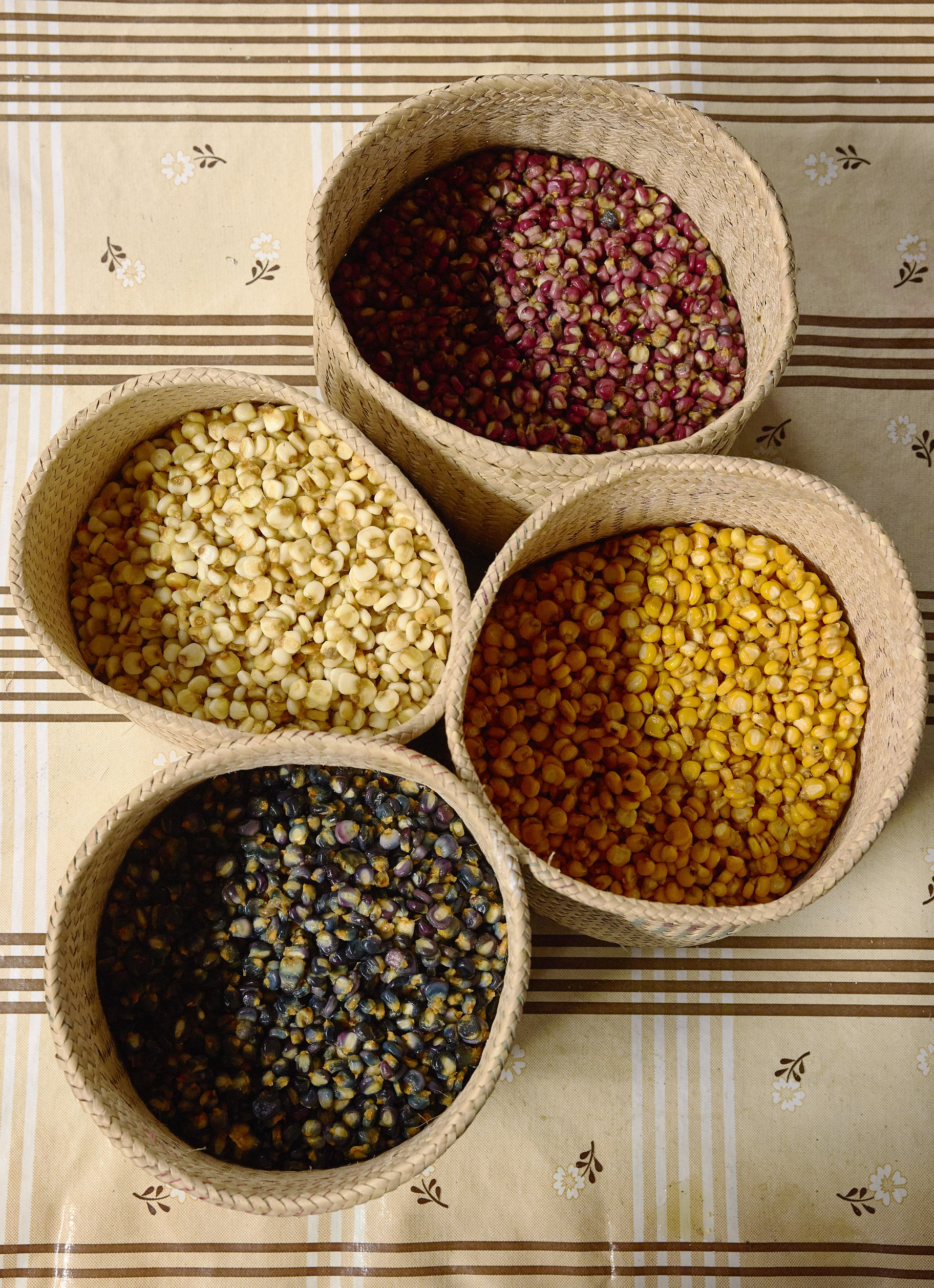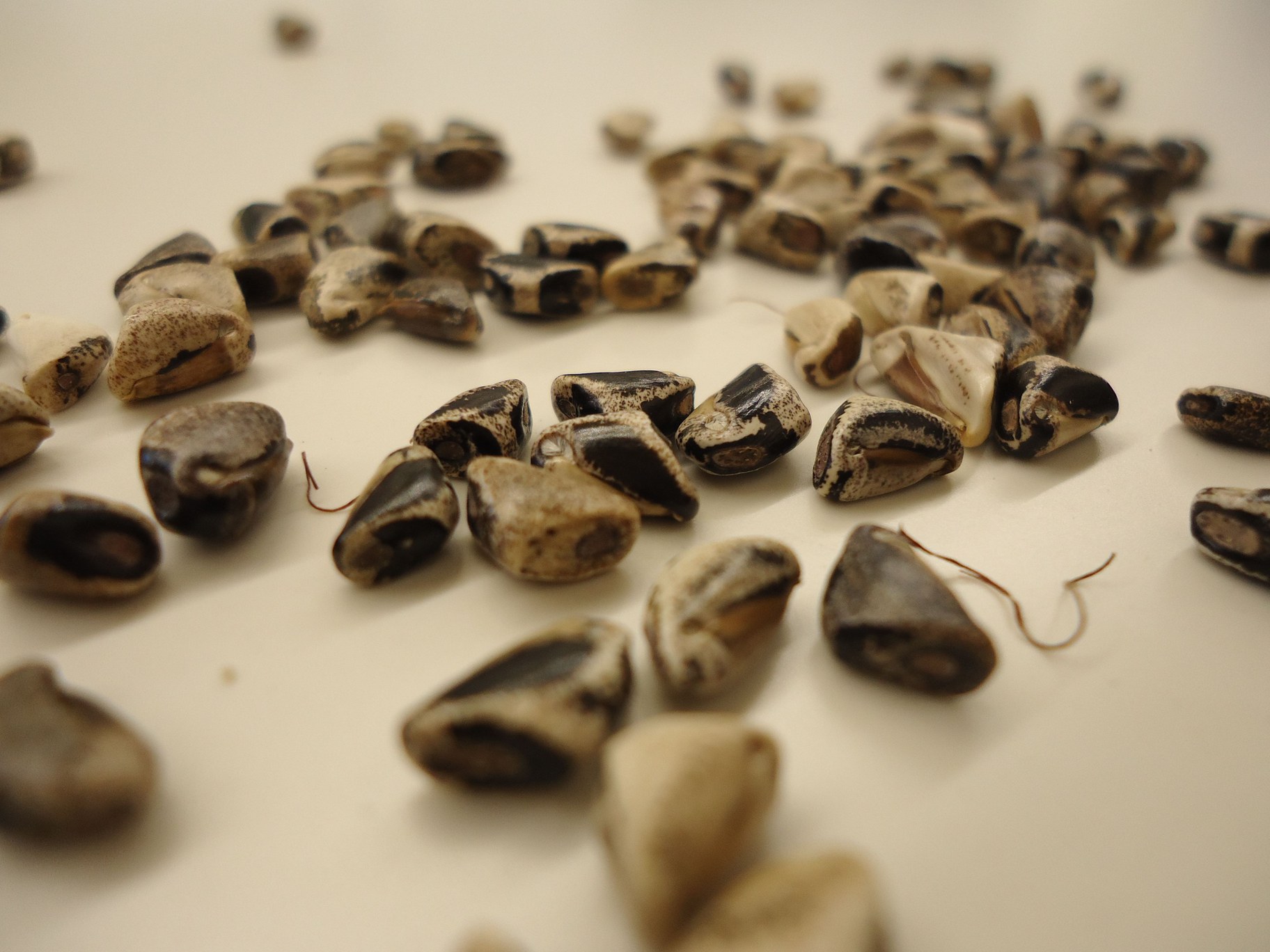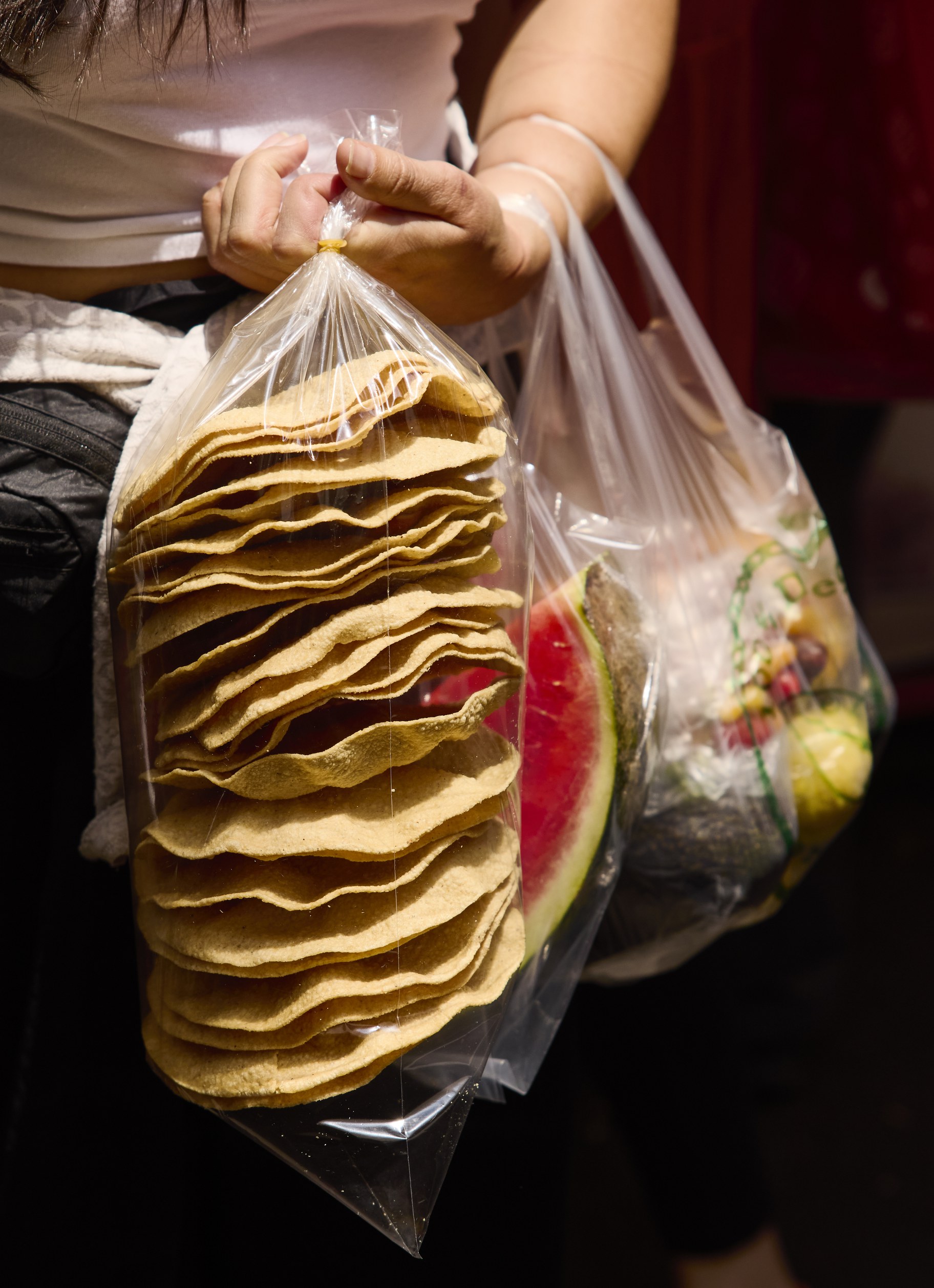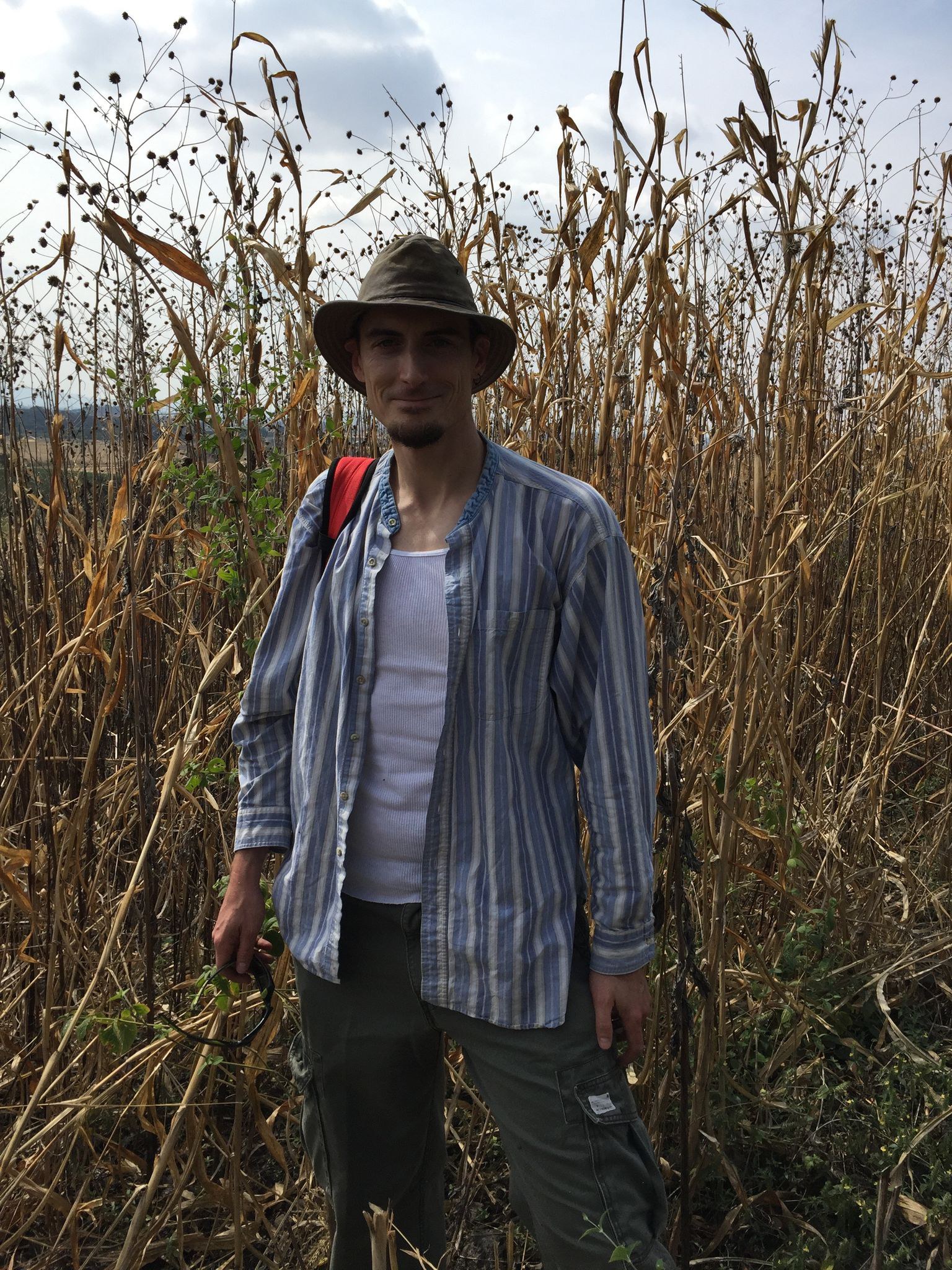Jorge Gaviria, founder of Masienda and author of Masa: Techniques, Recipes, and Reflections on a Timeless Staple, reflects on starting his own company devoted to corn. Professor Jeffrey Ross-Ibarra studies the evolution of maize and its relatives. Claudia Serrato, an Indigenous culinary anthropologist, cooks North and Mesoamerican foods and, as a Native chef, works to revitalize ancestral taste memories through cuisine. Finally, Kathleen Fitzgerald, along with her partner Keith Stavely, are experts on New England food history. They've written two books on the subject including America's Founding Food: The Story of New England Cooking. She details the raiding of the Americas that changed the way corn is grown and eaten.
This interview has been edited for length and clarity.
KCRW: Masa isn't just one thing. There are many different kinds of masa. There's fresh masa vs. dry masa. Then, you have to think about how you plan to use it. Masa meant for tamales is thicker than masa for tortillas.
In the United States, most of the masa that people eat today is made from masa harina, dehydrated nixtamalized corn flour. Although it's not fresh, it is convenient. But most of that masa harina comes from one source which is why Jorge Gaviria started Masienda.
Jorge Gaviria: I think the industrialization of food has done a number on the staples that we know and love. In a lot of ways there was good, it sped up a process that might otherwise take a really long time. It freed up the leaders of the household, the matriarch, usually in this case, to do other things. But I do think that too much of a good thing might be bad.
The kernel of the idea to start an independent masa harina company blew Gaviria's way while he was working at high-end, often farm-to-table restaurants in New York.
Jorge Gaviria: The more I got deep into the weeds of these restaurants, the more I realized that this kind of ethos that permeated my daily work was really absent from the conversation and the foods that I grew up eating. So many foods, masa being at the center of that — beans, rice, staples of a Latin household — to me lacked that kind of thoughtfulness from a both brand and storytelling perspective and certainly the sourcing wasn't there to match it either. I sought out to create a version of the kind of food company I wanted to consume myself.

"Corn cannot survive without humans. And humans, at least us and my family, cannot survive without corn," says Indigenous culinary anthropologist Claudia Serrato. Photo by Graydon Herriott.
To make great tortillas, you need great masa. And to make great masa, you need great maize, also known as corn.
Tell the truth. Before it became a meme thanks to one exceptionally cute child, when was the last time you thought about corn?
Whether you're eating elotes at a soccer game or scarfing down fistfuls of popcorn as you Netflix and chill, you probably haven't paused to pay tribute to the stuff. Which is too bad. Because corn is amazing!
It can grow in a wide range of latitudes and altitudes. It can survive without much water. It's great at adapting to a variety of microclimates. For most of the original human inhabitants of the Americas, corn was nothing less than a savior. It was the engine of civilization and the crop that built continents.
Before there was masa, there was maize. And before there was maize, there was teocintle, corn's wild and unruly ancestor.
Picture it — South-Central Mexico, roughly 7,000 to 9,000 years ago. We're in what is now known as the Balsas River Valley. It's hard enough for me to imagine what I ate for lunch last week, let alone a landscape from centuries ago. So I decided to ask an expert.
Jeffrey Ross-Ibarra: They're fields of millions and millions of plants just stretched as far as you can see over hillsides of just dense teosinte. You'll also see teosinte growing in and among acacia trees across the landscape, but you'll see just vast populations of this teosinte across the landscape. That's very different. That's the teosinte that is what we think the closest wild relative of maize.
Teocintle looked and tasted very different from the corn we modern humans are used to.
Jeffrey Ross-Ibarra: The plant looks a lot bushier than a corn plant. And if you just saw one in the field, you probably wouldn't think that it was a corn plant. And the most noticeable difference, of course, is that while we think of corn as having these large ears alongside the main stem, teosinte doesn't have that. Teosinte will have, instead of one or two ears, will have hundreds of ears along the plant, along the branches of the plant. And the ears are very, very tiny. They'll only have seven or eight kernels. And the kernels, rather than an exposed corn kernel like we're used to seeing on an ear of corn, the kernels are actually covered in this really hard fruitcase that you could break a tooth on.
How did teocintle become maize? That's the thing. Nobody quite knows. But it probably took hundreds of thousands of years and a lot of genetic changes.
Jeffrey Ross-Ibarra: We have a pretty clear idea, in terms of the origin of maize, of generally where it came from. We know its closest wild relatives, we know the general geographic area, but actually a lot of the hows and whys and whens of maize's origins are still uncertain. And while that lack of information on maize's origins is frustrating, it is good for my job security.
Unlike many other crops, corn didn't just happen. Its kernels are too closely packed; its husk, too protective. The kernels can't just drop on the ground and propagate on their own. Corn requires human intervention.
The indigenous peoples of Mesoamerica, the vast swath of land that is now North America, Mexico, Central America and South America, figured this out millenia ago.
They practiced intercropping, often growing corn alongside beans and squash — a trio known as the Three Sisters. The ancient milpa was, to borrow a little modern language, organic, sustainable and regenerative. It was also what allowed civilizations to flourish.

Teocintle (aka teosinte), an ancient relative of corn, had kernels covered in a hard fruitcase that one could break a tooth on. Photo courtesy of Jeffrey Ross-Ibarra.
Jeffrey Ross-Ibarra: Maize is actually pretty amazing in its ability to adapt to different climates in different environments. Maize is grown in rain fed agriculture in the deserts, the Mojave Desert. Maize is grown at 12,000 feet in the Andes. Maize has grown today in northern Europe. And by some metrics, at least, maize has colonized a greater breadth of environments than any other major crop.
It can grow fast. Some types of corn can go from seed to the next generation of seed in only 60 days.
Jeffrey Ross-Ibarra: Corn was an important staple crop for a number of civilizations in Mesoamerica before European contact, allowing increases in population size and really allowing for large dense populations.
The first step in cultivating corn is choosing which kernels or seeds to plant. The original farmers of Mesoamerica were probably selecting for tasty, hardy, high-yield kernels.
Jeffrey Ross-Ibarra: But farmers are also really smart. They like to experiment, choosing different types and mixing them up, keeping a diversity of options available, like planting some late flowering or some earlier flowering in case rain was unpredictable.
The earliest sort of modern-looking corn cob that I'm aware of is something like 5,000 years old. So that's still several thousand years after the first microscopic botanical evidence of corn.
There was so much variety in early corn, we have no real idea how it looked or tasted. We do know that its genetic diversity is what allowed it to adapt to all sorts of conditions.
If that's all that maize had done, it would've been enough. But for the indigineous inhabitants of this land, maize wasn't merely nourishment for the body, it was spiritual sustenance too. By some accounts it was the source of life.
 To make great tortillas, you need great masa. And to make great masa, you need great maize, also known as corn. Photo by Graydon Herriott.
To make great tortillas, you need great masa. And to make great masa, you need great maize, also known as corn. Photo by Graydon Herriott.
Claudia Serrato: The corn itself has a responsibility to feed us as it's our responsibility to keep the corn alive because again, corn cannot survive without humans. And humans, at least us and my family, cannot survive without corn.
Maize played a crucial role in many indigineous religions and spiritual systems. The legends and stories about corn could be an entire episode on its own so we'll turn to Claudia Serrato for a quick rundown.
Claudia Serrato: What's really beautiful is that the ceremonies that were conducted and still conducted to this day, really celebrated the life journey of maíz. So we're talking from rituals that aligned with the preparation of the land in order to plant the seeds. And then you have rituals and ceremonies of the actual seeding. And then once the first sprout comes, it's also significant to a time, place and space, usually meaning the start of spring. Then there's also the growth as it's becoming into its adulthood as it begins to reproduce.
And then there's also the harvest ceremony. Then there's the seed saving ceremonies, and then ultimately the dinner, which is a time of convivencia. So there was never just one deity that was related to corn or to the masa harvest.
The creation story of the Mayan people, as laid out in their sacred text the Popol Vuh, speaks to the importance of maize. When the gods wanted to create humans, they first tried to do it with mud. Then, they used wood. Neither of those options worked out.
Claudia Serrato: What the gods did is they went ahead and gathered corn. They turned it into a corn meal, utilizing the volcanic elements to grind and pound. Eventually, they were able to form, according to mythology, four men and four women.
Maize was also important in Mesoamerican societies in other ways. Calendars were seasonally aligned, often based on the life cycle of maize. According to Roberto Cintli Rodriguez, author of the book Our Sacred Maiz Is Our Mother and a professor emeritus at the University of Arizona.
Roberto Cintli Rodriguez: Maíz is where philosophy, religion, ethics, morals reside and they're transmitted. And the way they're transmitted is through story and song and dance. I know that rice and wheat are important around the world. But I don't know if they're as important as the maíz is, as important to native peoples, because it's almost like everything revolves around corn.
In October 1492, Christopher Columbus and his raiding party landed on the islands of Guanahaní and what are now Cuba and Hispaniola. It set in motion a chain of events that would end life as countless indigenous inhabitants knew it. That includes the Taino people, who had been cultivating maize for who knows how long.
In fact, the word "maize" is a Spanish version of the word "mahiz," which means "bread of life" or "grain of the gods" in the Taino language.
Along with gold, native plants, birds and slaves, Columbus brought maize back to Spain. From there, it went to Germany then England. In Corn: A Global History, Michael Owen Jones explains that in the 1500s, Portuguese traders brought maize to the west coast of Africa while Arab merchants carried it to the Mediterranean and North Africa.
In 1620, the first European settlers, separatists from the Church of England, landed in what is now Cape Cod. Corn was one of the first things they discovered, and it would go on to save them. But it isn't the feel-good story you probably learned in elementary school. It begins with an act of theft. Get ready for some Thanksgiving truth.
Among the hundred or so passengers on the Mayflower were two men — Edward Winslow and William Bradford.

Jeffrey Ross-Ibarra, professor of evolutionary genetics at the University of California, Davis, explains that corn was an important staple crop for a number of civilizations in Mesoamerica before European contact, allowing increases in population size and density. Photo courtesy of Jeffrey Ross-Ibarra.
Kathleen Fitzgerald: It was shortly after the Mayflower had dropped anchor in Cape Cod Bay. There was an exploring party sent inland to find out what was around in the area. And they came across a harvested field and an adjacent mound of sand. And buried in the mound, and this is what Winslow and Bradford write, they found "a fine, great new basket full of very fair corn of this year. The basket held about three or four bushels, which was as much as two of us could lift up from the ground and was very handsomely and cunningly made."
Now, the exploring party took the basket with them. So that was the theft and its contents were added to the provision on board the Mayflower. Winslow and Bradford, in the account they wrote up, make sure to say that the Indians were compensated for the stolen corn later. But in fact, it's important to remember that that very first sort of gift of the Indians was something that the settlers stole from the native people.
That's Kathleen Fitzgerald. She and her partner, Keith Stavely, are experts on New England food history. They've written two books on the subject including America's Founding Food.
It's impossible to overestimate how crucial corn was to the English colonists.
Kathleen Fitzgerald: It's quite certain that the small band that came to settle in Plymouth would not have survived without corn. They were relying on the food on their ship, which was, of course, a supply that was dwindling daily. They had already lost over almost half their number from malnutrition over the winter of 1620, 21, and they were freezing.
The corn that the Mayflower colonizers ate was also pretty different than the corn we know.
Kathleen Fitzgerald: Some was yellow, some red, and others mixed with blue, and they called it a very goodly sight. It was not like the corn we eat today at all, however. It was a field crop. It was field corn of a particular variety called Northern Flint corn, which is still grown today.
We know that humans in Mesoamerica had been cultivating corn as long as 7,000 years ago. And we know masa also stretches back for countless generations. Although new tools altered the process, in many ways it remained fundamentally the same for centuries. You grow the corn. You harvest it. You nixtamalize it. You grind it into a dough. And boom, you've made masa! But today, the production process for most of the masa consumed on this planet is profoundly different. And that's not a good thing.
More: Did today's episode make you hungry? Find the works of those you heard on our masa show. You can also head to Masienda's website for their Masa Map, where you'll find a list of great masa spots around the country.
